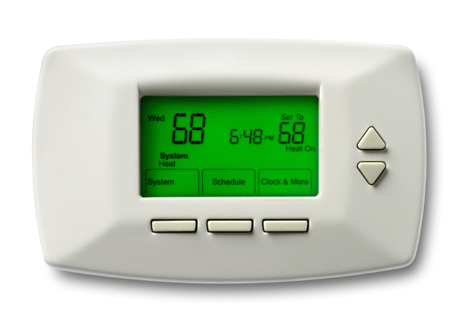In observance of Memorial Day, Westinghouse Water Heating will be closed on Monday—May 25, 2015. Regular hours will resume on Tuesday—May 26. Have a happy and safe holiday weekend.

In observance of Memorial Day, Westinghouse Water Heating will be closed on Monday—May 25, 2015. Regular hours will resume on Tuesday—May 26. Have a happy and safe holiday weekend.

Posted by Westinghouse Water Heating on May 21, 2015 10:00:00 AM
 Maintenance is critical on high efficiency space heating and water heating equipment to keep the unit running at peak efficiency. Proper maintenance should be provided at least once a year. Providing proper care for your unit can go a long way in terms of:
Maintenance is critical on high efficiency space heating and water heating equipment to keep the unit running at peak efficiency. Proper maintenance should be provided at least once a year. Providing proper care for your unit can go a long way in terms of:
product reliability
assuring optimal efficiency year after year
overall longevity of the appliance
Westinghouse Water Heating's high efficiency units are designed with this in mind, allowing typical maintenance procedures to be performed without the need to worry about replacement gaskets; combustion systems can be easily removed to gain access to the heat exchanger for proper cleaning and flushing of the heat exchanger as well as the condensate drain. Proper maintenance should also include visual inspections of all connections for leaks and/or defects. To assure maximum efficiency of the appliance, a combustion test should be performed and combustion should be adjusted to proper levels as needed. Providing maintenance is invaluable on modern condensing appliances and will keep your equipment efficient and will keep dollars in your pocket!
As springtime is underway and summer begins to approach, we thought it would be good to prepare you for the warmer temperatures with some tips from NextStepLiving.com. --

We’ve all been begging for winter’s bite to cease, and we might have finally caught a break with spring. After one of the most miserable winters since 2009, the infamously beautiful cherry blossoms are set to bloom just blocks from our very own U.S. Department of Energy Headquarters, and I’m quite excited.
But with warmer temperatures, our usual concern for home energy efficiency continues. While it’s unlikely you’ll need to turn on your air conditioning any time soon, preparation for the inevitable Long, Hot Summer is just as important. Below you’ll find a few easy ways to prepare your home for spring and summer temperatures.
To avoid the onslaught of central and window air conditioning to your utility bills, there are many strategies to help you save energy during the spring and summer and keep your home comfortable and inexpensively cooled. Ceiling fans are one of them.
Ceiling fans can reduce thermostat settings by 4°F and use much less energy than air conditioning. Just remember, like any appliance, they’re only useful to people when they’re actually around. So be sure to turn them off when leaving the house. You can find more about ENERGY STAR® ceiling fans on the ENERGY STAR website.
Keep your air conditioner in tip-top shape with annual filter checkups by your local maintenance company or appliance-savvy housemate. Also, be sure to replace filters in window air conditioners or wash them out. Learn the timer mechanisms on any appliance that is run continuously for optimal efficiency. You can learn more about operating and maintaining your air conditioner, evaporative cooler, or heat pump from Energy Saver. For room air conditioners, check out these efficiency tips.
Cooking food in an oven can increase the heat not just in your kitchen, but in your whole house. Using a microwave and stovetop to cook food can cut the heat in your home dramatically over using the oven.
You can also help keep your home cool by placing warm appliances (lamps, televisions, and cooking appliances) away from internal thermostats.
(Original article: http://energy.gov/energysaver/articles/preparation-warmer-temperatures)
Posted by Westinghouse Water Heating on May 19, 2015 11:00:00 AM
We stumbled upon this article on the Department of Energy website about saving energy and money via programmable thermostats. Read on for tips on how to save!

You can save money on your heating and cooling bills by simply resetting your thermostat when you are asleep or away from home. You can do this automatically without sacrificing comfort by installing an automatic setback or programmable thermostat.
Using a programmable thermostat, you can adjust the times you turn on the heating or air-conditioning according to a pre-set schedule. Programmable thermostats can store and repeat multiple daily settings (six or more temperature settings a day) that you can manually override without affecting the rest of the daily or weekly program.
You can easily save energy in the winter by setting the thermostat to 68°F while you're awake and setting it lower while you're asleep or away from home. By turning your thermostat back 10° to 15° for 8 hours, you can save 5% to 15% a year on your heating bill -- a savings of as much as 1% for each degree if the setback period is eight hours long. The percentage of savings from setback is greater for buildings in milder climates than for those in more severe climates.
In the summer, you can follow the same strategy with central air conditioning by keeping your house warmer than normal when you are away, and setting the thermostat to 78°F (26°C) only when you are at home and need cooling. Although thermostats can be adjusted manually, programmable thermostats will avoid any discomfort by returning temperatures to normal before you wake or return home.
A common misconception associated with thermostats is that a furnace works harder than normal to warm the space back to a comfortable temperature after the thermostat has been set back, resulting in little or no savings. In fact, as soon as your house drops below its normal temperature, it will lose energy to the surrounding environment more slowly. The lower the interior temperature, the slower the heat loss. So the longer your house remains at the lower temperature, the more energy you save, because your house has lost less energy than it would have at the higher temperature. The same concept applies to raising your thermostat setting in the summer -- a higher interior temperature will slow the flow of heat into your house, saving energy on air conditioning. Check out our home heating infographic to learn more about how heating systems and thermostats interact.
Programmable thermostats are generally not recommended for heat pumps. In its cooling mode, a heat pump operates like an air conditioner, so turning up the thermostat (either manually or with a programmable thermostat) will save energy and money. But when a heat pump is in its heating mode, setting back its thermostat can cause the unit to operate inefficiently, thereby canceling out any savings achieved by lowering the temperature setting. Maintaining a moderate setting is the most cost-effective practice. Recently, however, some companies have begun selling specially designed programmable thermostats for heat pumps, which make setting back the thermostat cost-effective. These thermostats typically use special algorithms to minimize the use of backup electric resistance heat systems.
Electric resistance systems, such as electric baseboard heating, require thermostats capable of directly controlling 120-volt or 240-volt circuits. Only a few companies manufacture line-voltage programmable thermostats.
The slow response time -- up to several hours -- of steam heating and radiant floor heating systems leads some people to suggest that setback is inappropriate for these systems. However, some manufacturers now offer thermostats that track the performance of your heating system to determine when to turn it on in order to achieve comfortable temperatures at your programmed time.
Alternately, a normal programmable thermostat can be set to begin its cool down well before you leave or go to bed and return to its regular temperature two or three hours before you wake up or return home. This may require some guesswork at first, but with a little trial and error you can still save energy while maintaining a comfortable home.
Most programmable thermostats are either digital, electromechanical, or some mixture of the two. Digital thermostats offer the most features in terms of multiple setback settings, overrides, and adjustments for daylight savings time, but may be difficult for some people to program. Electromechanical systems often involve pegs or sliding bars and are relatively simple to program.
When programming your thermostat, consider when you normally go to sleep and wake up. If you prefer to sleep at a cooler temperature during the winter, you might want to start the temperature setback a bit ahead of the time you actually go to bed. Also consider the schedules of everyone in the household. If there is a time during the day when the house is unoccupied for four hours or more, it makes sense to adjust the temperature during those periods.
The location of your thermostat can affect its performance and efficiency. Read the manufacturer's installation instructions to prevent "ghost readings" or unnecessary furnace or air conditioner cycling. To operate properly, a thermostat must be on an interior wall away from direct sunlight, drafts, doorways, skylights, and windows. It should be located where natural room air currents–warm air rising, cool air sinking–occur. Furniture will block natural air movement, so do not place pieces in front of or below your thermostat. Also make sure your thermostat is conveniently located for programming.
(Original article: http://energy.gov/energysaver/articles/thermostats)
Posted by Westinghouse Water Heating on May 13, 2015 10:00:00 AM
Check out these tips from Energy.gov on ways to save on your water heating bill!
Sometimes it surprises me to see that the most popular pages on the site are the ones about solar water heaters and demand (or tankless) water heaters. But considering that water heating can account for around 12% of a family's utility bill—the biggest chunk after space heating and cooling—it really shouldn't be that surprising that you want to know how to heat your water more efficiently.
Obviously, not everyone is in a position to go out and buy a new water heater, but we can all do something to use less water and save on our bills.
Whether you're looking for no-cost habit changes, low-cost purchases or improvements, or large investments like new water heaters or appliances, there's something here for you:
(Original article: http://energy.gov/energysaver/articles/15-ways-save-your-water-heating-bill)